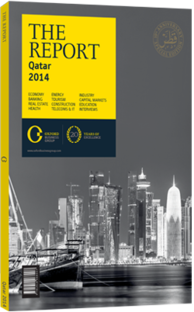A change in the rules: The central bank introduces new regulations for lenders
Regulations introduced by the Qatar Central Bank (QCB) in June 2013 will curb local banks’ investment options, potentially making sovereign bonds more appealing at the expense of some private sector alternatives. The move is taking place as the government prepares to put its infrastructure development programme into overdrive. Under the new regulations, with which lenders were given six month to comply, equities and bonds can account for up to 25% of a bank’s capital and reserves, although debt issued by the government and national banks is exempt from the limit. The cap had been previously set at 30%.
Introducing New Caps
The new regulations also limit the amount banks can place with individual companies and unlisted securities, establishing a maximum of 5% of capital and reserves for foreign investments and 10% domestically. The cap for total foreign equities is set at 15%. These new rules will apply to both conventional and Islamic lenders, while the latter will also see the limit on the amount they can invest in real estate lowered from 30% previously to 10% of their total capital and reserves. In a note to clients issued soon after the QCB’s move, Arqaam Capital said the changes to the rules would likely prompt Qatar’s banks to strengthen their holdings of government debt. “The new regulations may push banks to transfer their excess liquidity out of the public capital markets into additional positions with the government and the other exempt entities, adding to their already sizeable positions,” the Dubai-based investment bank said.
Though the central bank did not explain its move, many analysts believe it is connected to the investment programme being undertaken by the government, in part linked to the hosting of the 2022 FIFA World Cup, but also to other major infrastructure projects. By restricting the amount that banks can invest in the private sector, the government appears to be deepening the capital pool from which it can borrow.
Major Works
State borrowing is already on the rise, with bank lending to the public sector climbing by 47% in 2012 and averaging annual growth of 43% over the past three years, according to a report by QNB Financial Services released at the end of May 2013. This increased volume, which totalled $60bn in 2012, was mainly a result of the government and state enterprises looking to fund infrastructure and investment developments through locally sourced short- to medium-term loans, the research note said.
Although banks are lending more to the state, they also appear to have sufficient funds to meet the demand. There is ample liquidity in the banking system, with the large fiscal surplus underpinning a 24% rise in deposits over 2013, according to a QNB Financial Services report issued in February 2014. Still, Qatar’s banks could turn to global capital markets in response to a continued increase in demand for funds from the state. In that case, the central bank’s new rules could reassure global investors of the soundness of the Qatari banking system, even if it comes at the expense of local firms looking for equity investors.
You have reached the limit of premium articles you can view for free.
Choose from the options below to purchase print or digital editions of our Reports. You can also purchase a website subscription giving you unlimited access to all of our Reports online for 12 months.
If you have already purchased this Report or have a website subscription, please login to continue.

